To Daniel Sharpe [1 November 1846]
Down Farnborough Kent
Sunday
My dear Sir
I have been much interested with your letter & am delighted that you have thought my few remarks, worth attention. My observations on foliation are more deserving confidence than those on cleavage;1 for during my first year in clay-slate countries I was quite unaware of there being any marked difference between cleavage & stratification; I well remember my astonishment at coming to the conclusion that they were totally different actions, & my delight at subsequently reading Sedgwicks views;2 hence at that time I was only just getting out of a mist. With respect to cleavage-laminæ dipping inwards, on mountain-flanks I have certainly often observed it, so often that I thought myself justified in propounding it as usual; I might perhaps have been some degree prejudiced by Von Buch’s remarks,3 for which in those days I had a somewhat greater deference than I now have.— The mount at M. Video (p. 146 of my Book) is certainly an instance of the cleavage laminæ of an hornblendic schist dipping inwards on both sides; for I examined this hill carefully with compass in hand & note book. I entirely admit, however, that a conclusion drawn from striking a rough balance in one’s mind, is worth nothing, compared with the evidence drawn from one continuous line of section. I read Studer’s Papers carefully & drew the conclusion stated, from it;4 but I may very likely be in an error. I only state that I have “frequently” seen cleavage-laminæ dipping inwards on mountain-sides; that I cannot give up, but I daresay a general extension of the rule, (as might justly be inferred from the manner of my statement) would be quite erroneous.5
Von Buch’s statement is in his Travels in Norway; I have unfortunately lost the reference & it is a high crime, I confess, ever to refer to an opinion, without a precise reference. If you never read these Travels, they might be worth skimming, chiefly as an amusement; & if you like, & will send me a line by the Gen. Post on Monday or Tuesday, I will either send it up with Hopkins on Wednesday, or bring it myself to Geolog. Soc. I am very glad you are going to read Hopkins;6 his views appear to me eminently worth well comprehending: false views & language appear to me to be almost universally held by geologists on the formation of fissures, dikes & mountain-chains. If you would have the patience, I shd be glad if you wd. read in my “Volcanic Islands” from page 65, or even 54 to 72, viz on the lamination of volcanic rocks: I may add that I sent the series of specimens there described to Prof. Forbes of Edinburgh, & he thought they bore out my views.7
There is a short extract from Prof. Rogers’ in the last Eding. New Phil. Journ. well worth your attention on the cleavage of the Appalachian Chain,8 & which seems far more uniform in direction of dip, than in any case, which I have met with: the Rogers’ doctrine of the ridges being thrown up by great waves I believe is monstrous; but the manner in which the ridges have been thrown over (as if by a lateral force acting on one side on a higher level than on the other) very curious, & he now states that the cleavage is ⟨parallel⟩9 to the axis-plane of these thrown over ridges.— Your case of the limestone beds to my mind is the greatest difficulty on any mechanical doctrine; though I did not expect ever to find actual displacement, as seems to be proved by your shell-evidence.—10 I am extremely glad you have taken up this most interesting subject in such a philosophical spirit; I have no doubt you will do much in it;—Sedgwick let a fine opportunity slip away.— I hope you will get out another section like that in your letter; these are the real things wanted.
Believe me Yours very sincerely | C. Darwin
Footnotes
Bibliography
Buch, Christian Leopold von. 1813. Travels through Norway and Lapland during the years 1806, 1807, and 1808. Translated by John Black. With notes by Robert Jameson. London: Henry Colburn.
Collected papers: The collected papers of Charles Darwin. Edited by Paul H. Barrett. 2 vols. Chicago and London: University of Chicago Press. 1977.
Herschel, John Frederick William, ed. 1849. A manual of scientific enquiry; prepared for the use of Her Majesty’s Navy: and adapted for travellers in general. London: John Murray.
Hopkins, William. 1836. An abstract of a memoir on physical geology; with a further exposition of certain points connected with the subject. London and Edinburgh Philosophical Magazine and Journal of Science 8: 227–36, 272–81, 357–66.
Hopkins, William. 1842. On the elevation and denudation of the district of the lakes of Cumberland and Westmoreland. Proceedings of the Geological Society of London 3 (1838- -42): 757–66.
Hopkins, William. 1845–56. On the geological structure of the Wealden district and of the Bas Boulonnais. [Read 3 February 1841.] Transactions of the Geological Society of London 2d ser. 7: 1–51.
Rogers, Henry Darwin. 1846. On cleavage of slate-strata. Edinburgh New Philosophical Journal 41: 422–3.
Sedgwick, Adam. 1835. Remarks on the structure of large mineral masses, and especially on the chemical changes produced in the aggregation of stratified rocks during different periods after their deposition. [Read 11 March 1835.] Transactions of the Geological Society of London 2d ser. 3: 461–86.
Sharpe, Daniel. 1846. On slaty cleavage. [Read 2 December 1846.] Quarterly Journal of the Geological Society of London 3 (1847): 74–105.
South America: Geological observations on South America. Being the third part of the geology of the voyage of the Beagle, under the command of Capt. FitzRoy RN, during the years 1832 to 1836. By Charles Darwin. London: Smith, Elder & Co. 1846.
Studer, Bernhard. 1842. General view of the geological structure of the Alps. Edinburgh New Philosophical Journal 33: 144–65.
Summary
Discusses foliation and cleavage. Comments on dip of cleavage laminae in mountains. Mentions views of Sedgwick and Studer. Suggests reading C. L. von Buch [Travels through Norway and Lapland (1813)] "as an amusement". Praises views of William Hopkins. Suggests reading paper by H. D. Rogers ["On cleavage of slate-strata", Edinburgh New Philos. J. 41 (1846): 422–3)]. Comments on the paper.
Letter details
- Letter no.
- DCP-LETT-1016
- From
- Charles Robert Darwin
- To
- Daniel Sharpe
- Sent from
- Down
- Source of text
- The British Library (Add MS 37725: ff. 4–5)
- Physical description
- ALS 3pp & C
Please cite as
Darwin Correspondence Project, “Letter no. 1016,” accessed on 26 September 2022, https://www.darwinproject.ac.uk/letter/?docId=letters/DCP-LETT-1016.xml
Also published in The Correspondence of Charles Darwin, vol. 3


